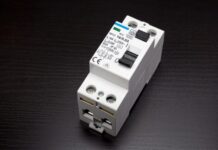Electrical resistance is a fundamental concept in the world of electronics and electrical engineering.
It’s an essential property of materials that helps us understand how they behave in an electrical circuit.
However, for beginners, electrical resistance can be a difficult concept to understand. This is why we have created this beginner’s guide to demystify the meaning of electrical resistance.
In this post, we’ll break down the concept of electrical resistance and explain its significance.
Furthermore, we will give you some practical examples to help you understand how it works in practice.
This guide offers a comprehensive understanding of electricity, suitable for students, hobbyists, or anyone interested in the subject.
So, let’s start our journey of demystifying the meaning of electrical resistance!
An Overview Of Electrical Resistance
Understanding electrical resistance is essential for anyone interested in the fields of electricity and electronics.
In simple terms, electrical resistance refers to the opposition offered by a material to the flow of electric current.
It is a fundamental concept that plays a crucial role in various electrical circuits and devices.
Imagine a water pipe with different diameters.
Water flowing through a narrow pipe encounters more resistance and requires more pressure to maintain a steady flow.
Similarly, electrical resistance is like a hindrance in the flow of electric current.
It restricts the free movement of electrons, causing them to collide with atoms and other particles in the material.
Resistance is measured in ohms (Ω), named after the German physicist Georg Simon Ohm, who first introduced Ohm’s Law.
Ohm’s Law states that the current flowing through a conductor is directly proportional to the voltage applied across it and inversely proportional to the resistance.
Different materials have different levels of resistance. Some materials, like metals such as copper or silver, offer low resistance and are called conductors.
They allow electric currents to flow easily. On the other hand, materials like rubber or plastic have high resistance and are called insulators.
Electrical resistance helps in designing circuits, calculating power consumption, selecting appropriate components, and ensuring safety in electrical systems.
This beginner’s guide delves into the concept of electrical resistance, examining its significance, calculation methods, and practical applications.
By the end, you will have a solid foundation to further explore the fascinating world of electricity and electronics.
So, let’s unravel the mysteries surrounding electrical resistance and embark on an enlightening journey together.
The Importance Of Electrical Resistance
What exactly is electrical resistance, and why is it important?
Electrical resistance is the opposition an electrical conductor makes to the flow of electric current.
A roadblock is a physical obstruction that impedes the efficient flow of electricity through a wire or other conductive material.
This opposition arises due to the collisions between the moving electrons and the atoms of the conductor.
Electrical resistance is measured in ohms, symbolized by the Greek letter Ω.
The higher the resistance in a circuit, the harder it is for current to flow through it.
Conversely, lower resistance means that current can flow more easily.
Now, you might be wondering why electrical resistance is important.
Well, it has numerous implications in various aspects of electrical engineering and everyday life.
One of its key applications is determining the efficiency of electrical devices.
Engineers can enhance energy efficiency by designing circuits and components that minimize power loss by effectively managing resistance.
Moreover, electrical resistance plays a fundamental role in safety measures.
It helps determine the appropriate size of wires and cables to handle the current without overheating or causing potential hazards.
Resistance is crucial in preventing electrical fires, shocks, and other electrical accidents.
Furthermore, electrical resistance is a key factor in designing electronic devices and systems.
Engineers can regulate current and voltage flow to ensure optimal component function within their specified operating ranges.
Without a thorough understanding of resistance, it would be challenging to design and optimize electronic circuits.
In summary, electrical resistance refers to the obstruction that hinders the flow of current through a conductor. It is a crucial concept in electrical engineering, influencing the efficiency, safety, and design of electrical systems.
Ohm’s Law And Its Relationship To Resistance
Named after the German physicist Georg Simon Ohm, Ohm’s Law is a fundamental principle that explains the relationship between voltage, current, and resistance in an electrical circuit.
In simple terms, Ohm’s Law states that the current flowing through a conductor is directly proportional to the voltage applied across it and inversely proportional to the resistance of the conductor.
You can express mathematically as I = V/R, where I represents current in amperes (A), V represents voltage in volts (V), and R represents resistance in ohms (Ω).
By understanding this law, we can gain insights into how resistance affects the flow of electric current in a circuit.
Resistance can be seen as an obstacle that opposes the flow of electrons, causing them to slow down and generate heat in the process.
The higher the resistance, the lower the current flow, and vice versa.
Ohm’s Law allows us to calculate and predict various aspects of an electrical circuit.
For example, if we know the voltage and resistance in a circuit, we can determine the current flowing through it using the formula I = V/R. Similarly, if we know the current and resistance, we can calculate the voltage using the formula V = I * R.
Talking about the relationship between Ohm’s Law and resistance is essential for anyone starting their journey into the world of electrical engineering or electronics.
It forms the foundation upon which more complex concepts and calculations are built.
By grasping this fundamental principle, beginners can begin to demystify the meaning of electrical resistance and gain a deeper appreciation for the intricate workings of electrical circuits.
Now let us discuss the factors that affect electrical resistance
Factors That Affect Electrical Resistance
While resistance is a property inherent to all conductors, several factors can influence its magnitude.
By exploring these factors, you can gain a deeper understanding of how resistance operates in electrical systems.
These factors include:
1. Material
The type of material used in a conductor plays a significant role in determining its resistance.
Different materials have varying levels of atomic structure and conductivity.
For instance, metals like copper and silver exhibit low resistance due to their high electron mobility, making them ideal for conducting electricity efficiently.
Conversely, materials with a significantly higher resistance, such as rubber or plastic, frequently serve as insulators.
2. Length
The length of a conductor directly impacts its resistance. As the length increases, the path for electrons to travel also lengthens, resulting in higher resistance.
This relationship is described by the formula R = ρL/A, where R represents resistance, ρ is the resistivity of the material, L is the length of the conductor, and A is its cross-sectional area.
Therefore, a longer conductor will have a higher resistance compared to a shorter one, assuming other factors remain constant.
3. Cross-sectional area
The cross-sectional area of a conductor is inversely proportional to its resistance.
A larger cross-sectional area provides more space for electrons to flow, reducing congestion and resistance.
This relationship is reflected in the formula mentioned earlier, where a larger cross-sectional area results in a lower resistance value.
4. Temperature
Temperature also plays a role in affecting electrical resistance. In most conductors, resistance tends to increase with rising temperatures.
This behavior is due to the conductor’s atoms’ enhanced vibrations, which obstruct the smooth flow of electrons and raise resistance.
However, it’s worth noting that certain materials, such as semiconductors, exhibit different temperature-dependent resistance behaviors.
By considering these factors and their interplay, you can gain a better grasp of how electrical resistance operates in practical applications.
Whether you’re an aspiring electrical engineer or simply curious about the subject, this knowledge will empower you to navigate the world of electrical systems with confidence.
Calculating Electrical Resistance
Measuring and calculating electrical resistance is an essential skill for anyone delving into the world of electrical engineering.
It allows us to quantitatively analyze and predict how current flows through various components and circuits.
To measure electrical resistance, we use a device called a multimeter.
This versatile tool is equipped with various settings and probes that enable us to measure voltage, current, and resistance.
When measuring resistance, it’s important that you disconnect the circuit completely from any power source to get accurate readings.
After disconnecting, we can select the resistance measurement mode on the multimeter and connect the probes to the component or circuit we want to measure.
The multimeter then sends a small, known current through the component and measures the voltage drop across it.
By using Ohm’s Law (V = IR), we can calculate the resistance value by dividing the voltage drop by the current.
It’s important to note that you can only measure resistance in ohms (Ω).
Depending on the resistance range being measured, the multimeter may have different settings to accommodate various magnitudes of resistance values.
In addition to measuring resistance, we can also calculate resistance using the colors on a resistor.
Resistors are color-coded to denote their resistance values, and by understanding the color-code system, we can determine the resistance value without the need for a multimeter.
By mastering the art of measuring and calculating electrical resistance, beginners can gain a deeper understanding of how electrical circuits function and troubleshoot any issues that may arise.
It’s a fundamental skill that forms the basis of many electrical applications and is crucial for anyone interested in exploring the fascinating world of electronics.
Common Applications Of Electrical Resistance
Electrical resistance is a fundamental concept in the field of electrical engineering, and it plays a crucial role in various applications.
Understanding the practical applications of electrical resistance can help beginners grasp its significance in everyday life.
One common application of electrical resistance is in heating devices such as electric stoves and toasters.
These appliances utilize resistive elements, such as coils or wires with high resistance, to convert electrical energy into heat.
The resistance of these elements generates heat as an electric current passes through them, allowing us to cook food or toast bread.
Another vital application of electrical resistance is in the field of electronics.
Resistors, which are passive electrical components, are specifically designed to provide a specific amount of resistance in an electrical circuit.
They are used to control and limit the flow of current, protect sensitive components, and ensure proper voltage levels.
Resistors can be found in various electronic devices, ranging from smartphones and computers to audio amplifiers and televisions.
Lighting systems also rely on electrical resistance.
Incandescent light bulbs, although being phased out due to their low efficiency, rely on the resistance of a filament to produce light.
When electricity flows through the filament, its resistance causes it to heat up and emit visible light.
Compact fluorescent lamps (CFLs) and light-emitting diodes (LEDs) have replaced incandescent bulbs in many applications due to their higher energy efficiency.
Additionally, electrical resistance plays a vital role in electrical safety.
Grounding systems utilize resistance to provide a path for electrical faults to flow safely to the ground, preventing electric shocks and other hazards.
Electrical fuses and circuit breakers also utilize the concept of resistance to protect electrical circuits from overcurrent conditions.
Overall. from heating devices and electronics to lighting systems and safety mechanisms, electrical resistance is at the core of numerous practical applications that we encounter in our daily lives.
How To Manage And Control Resistance In Circuits
Managing and controlling resistance in circuits is crucial for maintaining the desired flow of electrical current and ensuring the efficient operation of electronic devices.
By understanding the factors that influence resistance and implementing effective strategies, you can effectively manage this fundamental aspect of electrical circuits.
One of the primary ways to control resistance is by selecting the appropriate materials for the conductors used in the circuit.
Different materials have varying degrees of resistance, with some being better conductors than others.
Copper, for example, is a commonly used conductor due to its low resistance, while materials like nichrome are utilized in applications that require higher resistance values.
Another method of managing resistance is by altering the length and cross-sectional area of the conductive material.
According to Ohm’s Law, resistance is directly proportional to the length of the conductor and inversely proportional to its cross-sectional area.
By increasing the length or reducing the cross-sectional area, resistance increases, and vice versa.
Furthermore, temperature significantly affects resistance. Many materials experience changes in resistance as the temperature fluctuates.
For instance, the resistance of most conductors increases with an increase in temperature.
Understanding this relationship is essential for designing circuits that can accommodate temperature variations without compromising their functionality.
In some cases, resistors are intentionally added to circuits to regulate and control resistance.
These passive electronic components are designed to have a specific resistance value and can be used to limit current flow or divide voltage in a circuit.
By strategically placing resistors in a circuit, you can fine-tune their behavior and ensure that the desired electrical characteristics are achieved.
Additionally, it is crucial to consider the impact of external factors such as environmental conditions, moisture, and corrosion on resistance.
These factors can alter the conductivity of materials and increase resistance over time.
Regular inspection, maintenance, and protection of circuit components can help mitigate these effects and ensure the long-term stability of resistance values.
Even novices can confidently navigate the complexity of electrical systems by comprehending and manipulating resistance in circuits.
These methods offer useful insights for managing resistance and enhancing the functionality of electrical devices. Whether it be through the careful selection of appropriate materials, modifying length and cross-sectional area, taking temperature effects into account, or strategically adding resistors.
Troubleshooting Resistance-Related Issues
Troubleshooting and diagnosing resistance-related issues can be a daunting task for beginners in the field of electrical engineering.
However, with a systematic approach and some basic knowledge, you can effectively identify and resolve these problems.
One common issue is a sudden increase in electrical resistance within a circuit.
This can lead to various problems such as overheating, voltage drops, or even complete circuit failure.
To troubleshoot this, start by examining the affected circuit for any loose connections, damaged wires, or faulty components.
Make sure all connections are secure and properly tightened.
Next, use a multimeter to measure the resistance across different points of the circuit.
Compare these readings to the expected values, which can be obtained from circuit diagrams or specifications provided by the manufacturer.
If you notice any significant deviations, it’s an indication that there may be a faulty component or a damaged section of the circuit.
To further narrow down the issue, systematically isolate different parts of the circuit by disconnecting them one by one and retesting the resistance.
This process, known as “divide and conquer,” helps identify the specific area where the problem lies.
Another useful troubleshooting technique is the “continuity test.”
This involves checking for a continuous flow of current through a circuit using a multimeter.
If there is a break in the circuit or an open connection, the multimeter will indicate infinite resistance.
By tracing the circuit and identifying these breaks, you can pinpoint the exact location of the issue.
It’s important to remember that resistance-related issues can be caused by a variety of factors, such as corrosion, insulation breakdown, or excessive load.
By systematically analyzing and diagnosing these problems, you can gain a better understanding of the underlying causes and implement effective solutions.
In conclusion, troubleshooting and diagnosing resistance-related issues requires a combination of theoretical knowledge and practical skills.
Frequently Asked Questions About Electrical Resistance
When it comes to understanding the concept of electrical resistance, beginners often have several questions in mind.
In this section, we’ll address some of the most frequently asked questions to help demystify electrical resistance.
Electrical resistance is the measure of how much a material opposes the flow of electric current. It is denoted by the symbol “R” and is measured in ohms (Ω). It is an inherent property of all materials and determines how easily or difficulty electric current can pass through them.
Resistance plays a crucial role in electrical circuits. It determines the amount of current that flows through a circuit for a given voltage. According to Ohm’s Law, the current (I) flowing through a circuit is directly proportional to the voltage (V) applied and inversely proportional to the resistance (R) of the circuit (I = V/R).
Resistance is influenced by various factors, including the material’s conductivity, length, cross-sectional area, and temperature.
Generally, materials with high conductivity, shorter lengths, and larger cross-sectional areas have low resistance.
Temperature can also impact resistance, as some materials exhibit an increase in resistance with temperature (positive temperature coefficient), while others decrease (negative temperature coefficient).
Resistance can be measured using a device called a multimeter. Multimeters are versatile tools that can measure various electrical properties, including resistance. By connecting the multimeter probes across a circuit or a component, it can provide the resistance value in ohms.
Resistance can be controlled by using different materials or altering the dimensions of a conductor. For example, copper wires have lower resistance compared to steel wires, so using copper wires can reduce resistance in a circuit. Additionally, increasing the thickness or width of a wire can decrease resistance.
By familiarizing yourself with these frequently asked questions, you’ll gain a solid foundation to further explore the world of electrical circuits and applications.
My Final On Electrical Resistance
As we conclude, it’s important to remember that electrical resistance is a fundamental concept in the world of electronics and electrical engineering.
It plays a crucial role in the functioning of various devices and circuits.
By now, you should have a clear understanding of what electrical resistance is and how it affects the flow of electric current.
Remember that resistance is dependent on factors such as the material’s properties, length, cross-sectional area, and temperature.
It is also worth mentioning that resistance can be both beneficial and detrimental.
For instance, resistors are commonly used to control the flow of current and protect sensitive components from damage.
On the other hand, excessive resistance can lead to voltage drops and inefficiencies in electrical systems.
By grasping the concept of electrical resistance, you are one step closer to unlocking the mysteries of the electrical world.
So, keep exploring, learning, and experimenting to gain a deeper understanding of this fascinating subject.
Read More From Us
How To Install A Transfer Switch For A Generator
What Is Electric Fuse: An Electrical Safety Device
Electric Unicycle Explained: The Best Alternate Transport System




